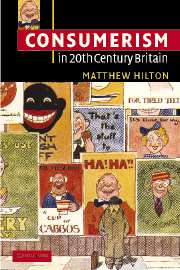In Charity, self-interest and welfare in the English past, Martin Daunton assembled a collection of authors committed to demonstrating the everchanging nature of welfare provision over the centuries. Martin clearly set out the differing forms of welfare provision – commercial, public, charitable, and household – with the balance between the four never being fixed. Indeed, in Jo Innes’ contribution, the precise nature of the mix between these different forms of welfare was never a source of agreement. While commentators might concur that all four served a purpose, the respective weight given to each one has always been in contention. In this chapter I focus on the relative weight given to charitable relief, and probe the nature of the mixed economy of welfare when that model of relief was taken abroad – by British charities, voluntary associations, and non-governmental organisations focused on humanitarian relief and long-term aid and development. In the latter half of the twentieth century they maintained a strong presence in the former territories of the British empire, though tragedy respects no borders, and organisations such as Oxfam, Christian Aid, and Save the Children came to operate in virtually every country the world over.
In Martin's introduction, he was keen to move away from older debates about charity and philanthropy that focused on their roles as agents of social control. Instead, the volume recognised the positive role charity could play in, for instance, the formation of new middle-class identities and in the opportunities afforded to women in the public sphere otherwise denied to them. In writing of the late nineteenth century Martin observed that, like today, charity constituted an incredibly diverse sector. It was, however, also the ‘golden age’ of philanthropy, as Frank Prochaska has argued. Prochaska has estimated that the middle classes spent a larger amount of their income on charity than on any item in their budget except food. Donations did not just come from the affluent. New research is showing the extent to which the British public as a whole responded to poverty and suffering at home and abroad. But precisely because charity was just one pillar of the mixed economy of welfare, the history of charity is intricately bound up with the history of capitalism, a point Martin has returned to in his other works on the history of political economy.
